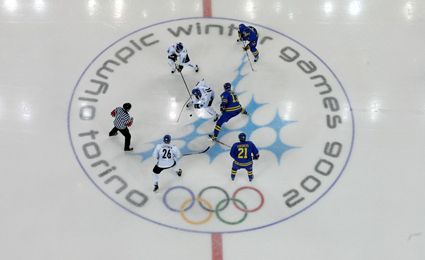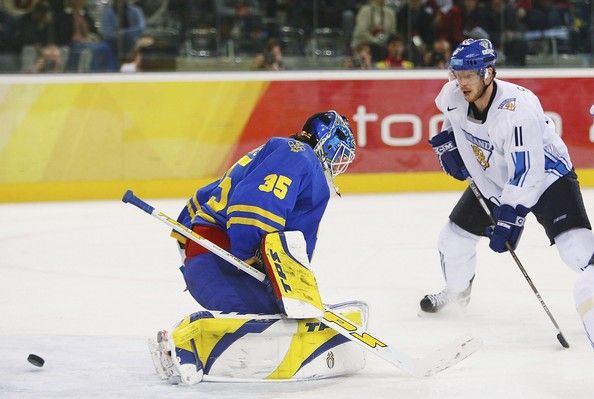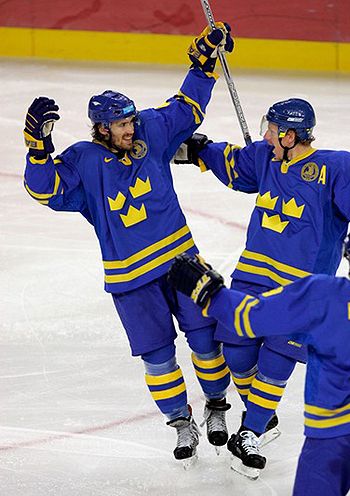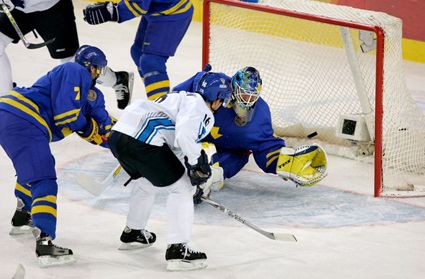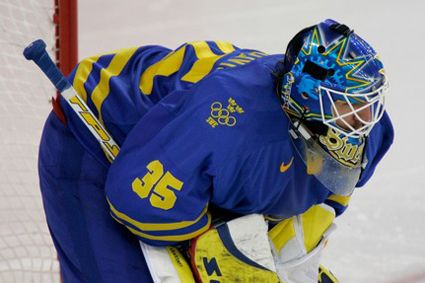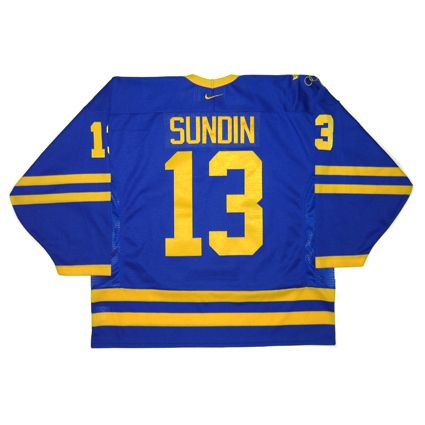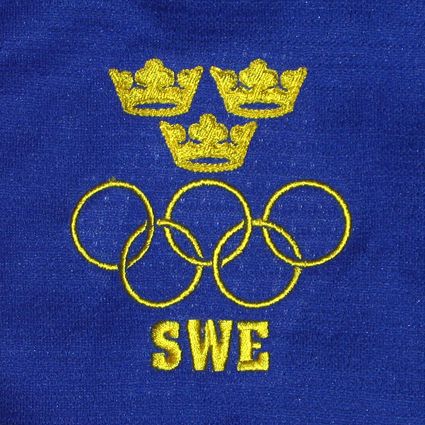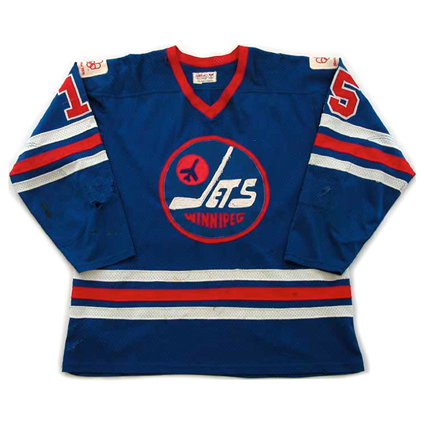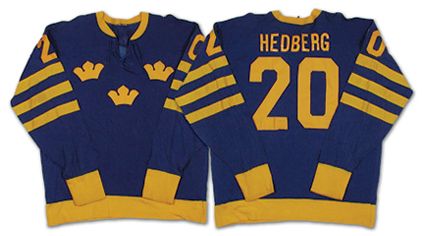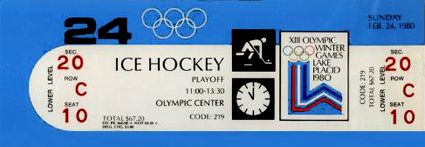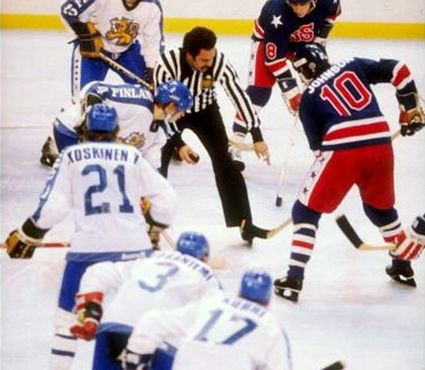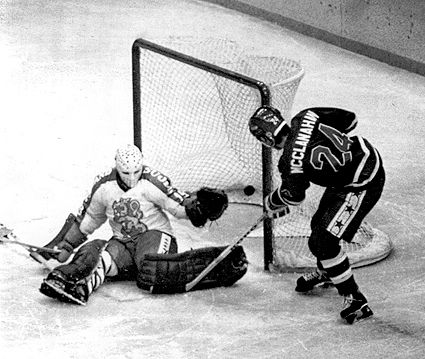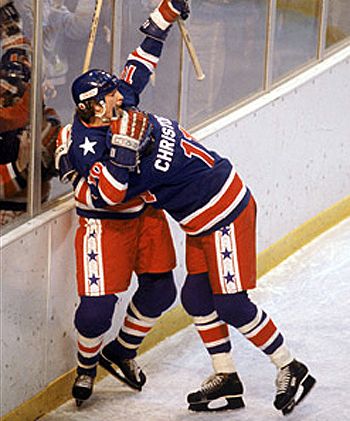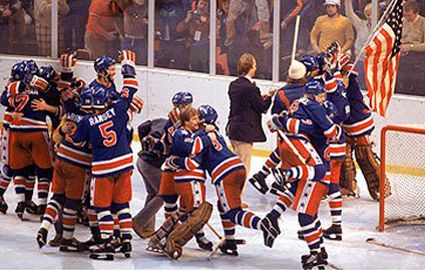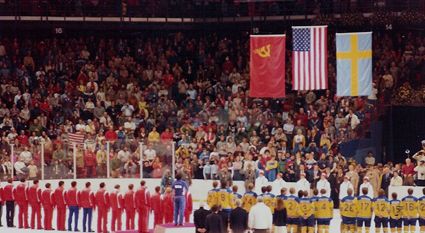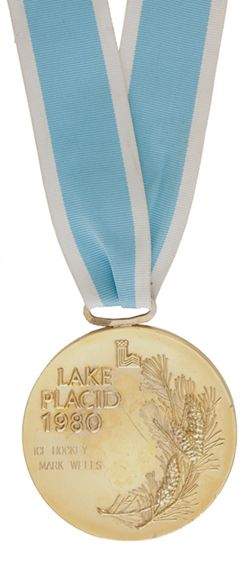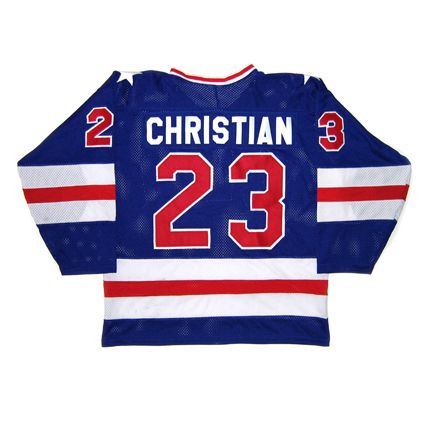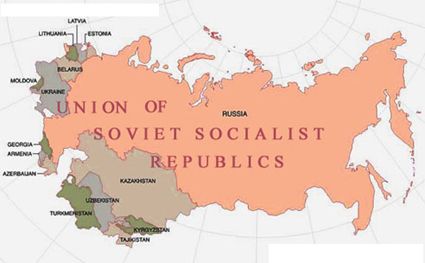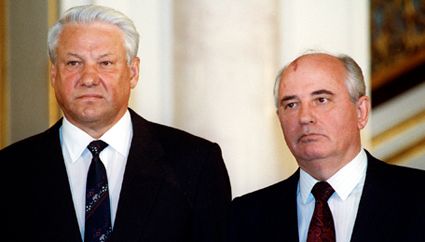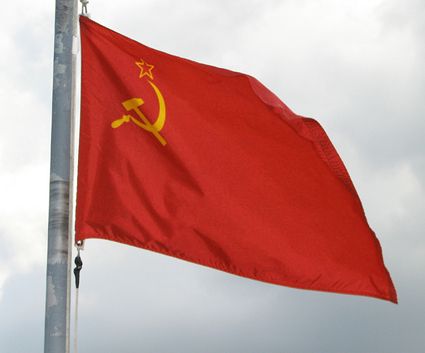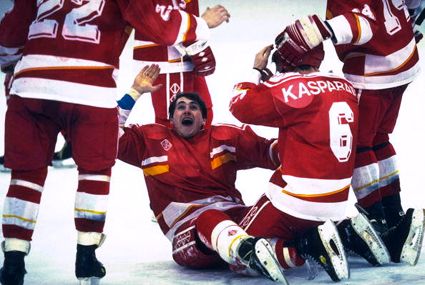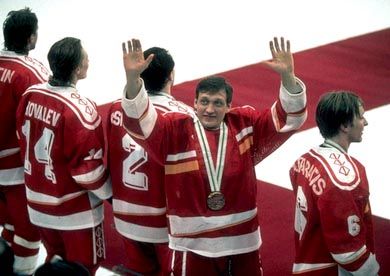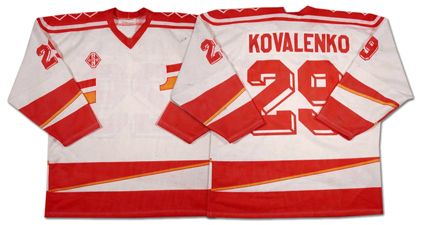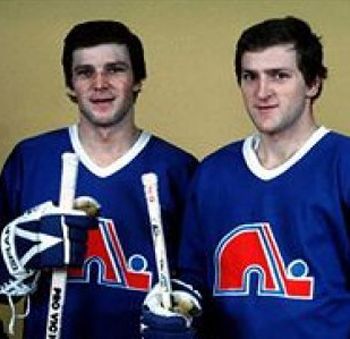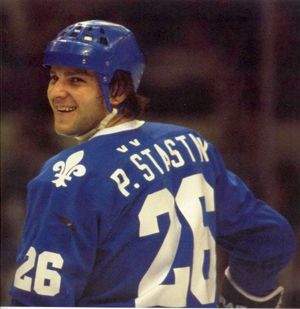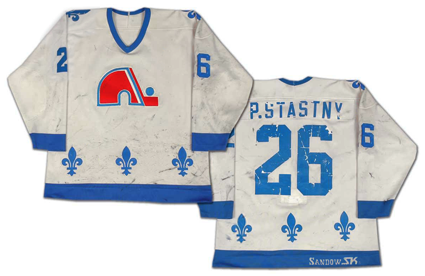Saturday, February 26, 2011
2006 Sweden National Team Mats Sundin Jersey
Looking to atone for their shocking defeat in 2002 at the hands of Belarus, Sweden came into the 2006 Olympics in Torino, Italy ranked second in the IIHF world rankings.
They were grouped with Slovakia (ranked 3rd), the United States (6th), Russia (7th) and qualifiers Kazakhstan and Latvia.
The Swedes opened their tournament on February 15th with a strong 7-2 win over Kazakhstan to get themselves off to an important fast start. They ran into a buzzsaw the very next day and were soundly thrashed by the Russians by a score of 5-0.
Fortunately for Sweden, overmatched Latvia was up next two days later and Sweden regained some confidence and momentum with an easy 6-1 victory. 24 hours later they had another one in the win column after a narrow 2-1 defeat of the United States. This set up a final Group B game against Slovakia with first place in the group on the line.
Unfortunately things went as poorly for Sweden as possible, as they went down to defeat 3-0 at the hands of the Slovaks, their second shutout in five games. That, combined with Russia's 5-4 win over the Americans, dropped Sweden down to third place in the final Group B standings and a Quarterfinal matchup with the second place team in Group A, who already had scored surprising defeats of both Canada and the Czech Republic in the preliminary round of group play.
However, Switzerland has also shown themselves to be inconsistent, having allowed winless Germany and Italy to tie them. They also showed they were entirely beatable in their 5-0 loss to Finland.
Sweden answered the challenge in fine style and easily ousted the Swiss from the tournament with a 6-2 win, again giving their confidence a boost when they needed it most. Next up for Sweden was the Czech Republic, who impressed no one in the preliminary round by losing three times, beating only Germany and Italy to do just enough to advance. Given a new life in the Quarterfinals, The Czechs upset Group B winners and rivals Slovakia 3-1 after an empty net goal with three seconds remaining.
Sweden earned their shot at a gold medal with a solid 7-3 trouncing of the Czechs.
Meanwhile in the other half of the bracket, the Russians had eliminated the previous gold medal winning Canadians, while Group A winners Finland ousted the United States 4-3 and then dumped Russia easily by a score of 4-0 to set up the gold medal showdown with their classic rivals Sweden.
The gold medal final opening faceoff
The red hot Antero Niittymaki got the start in goal for unbeaten Finland, while Henrik Lundqvist was named the starter for Sweden. Each team survived a penalty in the first period before Jorgen Jonsson was sent off at 14:15 for hooking. 30 seconds later Kimmo Timonen put Finland ahead with an assist from Teemu Selanne when his shot from the point trickled through Lundqvist's legs for a rather soft goal. Sweden was again penalized a little over a minute later, but held fast and the first period concluded with Finland ahead 1-0 on the scoreboard but trailing in shots 9-7.
Saku Koivu watches the puck squirt through Henrik Lundqvist
The intensity picked up in the second period when Toni Lydman of Finland was penalized at 3:52 which allowed Sweden to equalize at 4:42 when Henrik Zetterberg banked one in off of Niittymaki's leg as he came out from behind the net from Mikael Samuelsson and Christian Backman.
Zetterberg celebrates Sweden's first goal
A trio of Finnish penalties followed and during the third one called at 13:00 on Saku Koivu, Sweden was able to take the lead at 2-1 just 24 seconds later when defenseman Niklas Kronwall pinched in from the point and received a pass from Zetterberg. He temporarily lost the puck when a Finnish defender arrived at the same time, but he was able to recover the puck and fire a quick, hard wrist shot past Niittymaki for the goal.
Finland countered at the 15:00 mark when Jussi Jokinen swooped in behind the net and sent a quick pass to Ville Peltonen who was streaking toward the net. Peltonen was able to direct a backhander past Lundqvist to even the score at 2-2. Olli Jokinen received the second assist for Finland.
Ville Peltonen evens the game at 2-2
There was no scoring for the remainder of the second period despite a pair of power plays for Finland, the second of which was cut short by an interference penalty on Jussi Jokinen just 20 seconds into the Finnish power play. As the second period ended, the shots on goal again favored Sweden, this time by a narrow 11-10 margin.
Before the fans could settle into their seats, captain Mats Sundin won the opening faceoff of the third period and Peter Forsberg took the puck and skated over the Finnish blueline to the left side of the ice. Once across the ice he sent a pass back to Sundin trailing him over the line. Sundin then moved along the boards down to the left side of the faceoff circle and sent a backwards pass out to the blueline where a wide open Niklas Lidstrom was arriving with a full head of steam. He put everything he had into his shot which found the back of the net just over Niittymaki's shoulder only ten seconds into the period to regain the lead for Sweden at 3-2.
Lidstrom receives congratulations after his goal early in the third period
Sweden killed off penalties at the 3:33 and 11:50 marks as Lundqvist shut the door in goal, as the Finns outshot Sweden 10-8 for the period, to carry Sweden to the gold medal.
Sweden celebrates their gold medals
For the tournament, Daniel Alfredsson led Sweden in scoring with 5 goals and 5 assists for 10 points in 8 games, followed by Sundin's 3 goals and 5 assists, good for 8 points. Lundqvist played in 6 of Sweden's 8 games and finished with a 5-1 record and a 2.33 goals against average with a .907 save percentage.
Today's featured jersey is a 2006 Sweden National Team Mat Sundin jersey. 2006 was the year that Nike introduced the brand new Nike Swift jerseys, first seen at the World Junior Tournament on the USA and Canada. Each of the 12 participating countries in the 2006 Olympics wore the new Swift designs, except for Switzerland and the eventual gold medal winning Sweden, who were somehow able to overcome the truck-like weight and aerodynamics of the old style jerseys when compared to the new technologically advanced jerseys the rest of the field was outfitted with.
A unique addition to the Swedish jerseys from their previous sweaters was an attempt to create a "lace up" collar style, which was simply a few slits cut into the existing yoke collar and threading a white elastic threat through it, which did not actually have to be tied, as it was a single continuous piece.
Another unique feature of the jerseys Sweden wore during the 2006 Olympics was the Swedish Olympic logo added to the right shoulders, which was not added to the retail version of this jersey we purchased. After some much appreciated assistance from a friend who created an embroidery file and a helpful embroidery shop, we were able to add this vital detail to our jersey and were quite pleased with the results shown below.
The Swedish Olympic logo added to their jerseys at the 2006 games
Given the opportunity, Sweden always opts for their traditional bright yellow jerseys with blue crowns, stripes, names and numbers, but for this contest they captured gold in their road blue sweaters.
Today's video selection are highlights, including all the goals, from the 2006 Olympic gold medal final between Finland and eventual champions Sweden.
Labels:
Sundin Mats,
Sweden
Friday, February 25, 2011
1975-76 Winnipeg Jets Anders Hedberg Jersey
Having first played for his hometown club of MoDo in Ornskosvik, Sweden at the age of 16, Anders Hedberg, born on this date in 1951, settled into the normal career pattern for high level European players - establishing himself with a club team and annual appearances at the World Championships with his national team each spring.
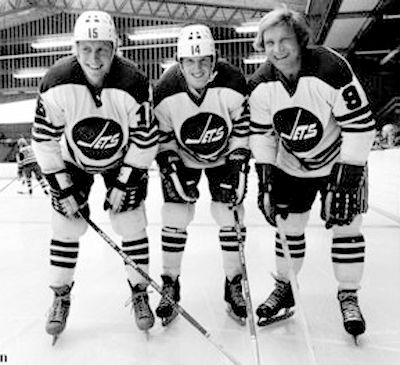
Hedberg made an immediate impression with 12 goals and 18 points in 24 games in 1967-68. He also made his first of many appearances for Sweden when he played in the European Junior Championships in 1968 with 7 points in 5 games.
His second season with MoDo saw his confidence grow as he topped the point per game mark with 23 points in 19 games. He also scored 5 goals in 5 games in the 1969 European Juniors on his way to being named Swedish Junior Player of the Year for 1969.
He repeated as Swedish Junior Player of the Year in 1970 after 24 points in 14 games for MoDo and 6 goals in 5 games during his third consecutive European Juniors. He was also named to the senior Sweden National Team for the World Championships in 1970, where he scored 5 points in 9 games while just having turned 19.
After two more seasons with MoDo and another World Championshps in 1973, Hedberg moved to Djurgardens IF in Stockholm for the 1973-74 season and what would prove to be his final appearance for some time with the national team at the 1974 World Championships where he again impressed with 7 goals and 10 points in 10 games.
It's at this point that the words "typical" and "usual" get thrown out the window, as over in North America the hockey landscape was undergoing a revolutionary war between the established, if not staid, National Hockey League and the upstart World Hockey Association, which had made a splash in 1972 by singing Chicago Black Hawks star Bobby Hull for $1 million to play for the Winnipeg Jets.
With the two leagues competing for players to fill 14 WHA and 18 NHL rosters, up from just 14 NHL teams in 1971-72 before the arrival of the WHA, teams now began to look beyond the borders of North America for really the first time. There had been the odd cases of players born in Europe who migrated to Canada in their youth, and even some Europeans who had brief stays in the NHL, Europeans were generally regarded as inferior players who were not tough enough to survive in the NHL.
That stereotype began to fade in 1973 with the arrival in Toronto of left wing Inge Hammarstrom and even more so defenseman Borje Salming, who would go on to play 17 seasons in the NHL. Hammarstrom would play in six NHL seasons and score a high of 24 goals and 43 points, but did not set the world on fire.
It was at this point that the Jets would look to Sweden and sign not only Hedberg, but fellow Swede Ulf Nilsson and team them up with Hull.
The result was simply the most dynamic line in the history of the WHA.

The trio would light up scoreboards all over the league, with each player reaching 100 points with Hedberg's 100 coming on 53 goals and 47 assists in 65 games which was good for seventh overall in the league and WHA Rookie of the Year honors.
1975-76 would again see the trio of Hull (53 goals, 123 points), Nilsson (114 pts.) and Hedberg (105 pts.) all top 100 points and the Jets improve 25 points in the standings to capture the Canadian Division title. Once in the playoffs, the Jets would sweep the Edmonton Oilers in 4, oust the Calgary Cowboys in 5 and sweep the Aeros in 4 to capture their first WHA championship and the Avco World Trophy as the line combined for 32 goals and 65 points in 13 games.
Hedberg was again chosen as a member of the Swedish National Team, this time for the inaugural Canada Cup in the fall of 1976, scoring 5 points in 5 games.
While Hull was limited to just 34 games of the 1976-77 regular season Hedberg stepped up and led the team with a career high 131 points which saw him finish second overall in the league, which he led with 70 goals. The Jets returned to the finals to defend their title but lost in seven games to the Quebec Nordiques.
Hedberg was fourth in WHA scoring in 1977-78 with 122 points and second on the Jets behind Nilsson. His 63 goals were first on the Jets and second in the WHA. He also led the Jets in playoff scoring with 15 points in 9 games as the Jets again captured the league championship.
The line of Hull, Hedberg & Nilsson celebrate their championship
With their contracts having expired and the WHA on the ropes, down to just seven teams from 14 three seasons earlier, Hedberg and Nilsson signed with the New York Rangers of the rival NHL for the 1978-79 season.
While Hedberg would never reach the scoring heights he achieved with Winnipeg, he was a regular 30 goal scorer while a member of the Rangers, hitting 30 or more four times, 25 once and 20 in his final season, in which he was limited to 64 games. Following his final NHL season of 1984-85, Hedberg was named the winner of the Masterton Trophy for perseverance, sportsmanship and dedication to ice hockey.
He also was a member of the NHL All-Star Team in the 1979 Challenge Cup against the Soviet National Team.
While his obligations to the Jets and Rangers during the spring playoff season prevented him from ever taking part in the World Championships for Sweden after coming to play in North America, Hedberg was able to get one final chance to play for Sweden in the 1981 Canada Cup, held in the fall prior to the start of the NHL season, where he scored 6 points in 5 games in his final international appearance.
In 1997, Hedberg was inducted into the International Ice Hockey Federation Hall of Fame.
Today's featured jersey is a 1975-76 Winnipeg Jets Anders Hedberg jersey. The Jets were a founding member of the WHA and adopted this jersey style for their second season of 1973-74, which they would wear for the remainder of their time in the WHA. The Jets would adopt a new style jersey for the 1979-80 season, their first as a member of the NHL.
During this particular season the Jets wore a patch on each shoulder commemorating Canada's hosting of the 1976 Summer Olympics in Montreal. While the Montreal Canadiens of the NHL understandably wore the patch, Toronto, Quebec, Edmonton and Calgary of the WHA and Toronto and Vancouver of the NHL did not, leaving us to wonder why the patriotism and support of Montreal's Olympic Games from the Winnipeg club and none of their other fellow Canadians?
Another surprising element of this jersey is the crudely shaped numbers on the back, which look as if they may have been hand cut, a far cry from today's uniformly identical machine cut twill numbers.
Bonus jersey: Today's bonus jersey is a 1976 Sweden National Team Anders Hedberg jersey from the 1976 Canada Cup, which features the traditional three crowns cresting, known as the "Tre Kroner".
In all, Hedberg competed for Sweden on seven occasions, resulting in 30 goals and 51 points in 54 games.
Labels:
Hedberg Anders,
Winnipeg Jets
Thursday, February 24, 2011
1980 United States Olympic Team Dave Christian Jersey
While everyone recalls the "Miracle on Ice" from February 22, 1980, many do not recall that the United States' victory over the Soviet Union was not the gold medal winning game.
With Finland leading 2-1 after two periods, a furious US head coach Herb Brooks warned the team during the final intermission that "If you lose this game, you will take it to your f***ing grave." He then walked almost all the way out of the room before turning around and repating "To your f***king grave."
"He didn't have to say much more than that. We knew he was right," USA forward Mark Johnson recalled.
Properly motivated, just over two minutes into the third period USA defenseman Dave Christian skated from his own zone into the Finnish end, drew the defense toward him and passed to left wing Phil Verchota who fired a wrist shot just inside the right post to tie the game at 2-2 at 2:25.
In fact, the tournament format in 1980 did not even have a gold medal final, as the teams were not placed in a single elimination bracket, as is the case with the Olympics and World Championships of today. Back in 1980, the format had the top two teams from both the Blue and Red Divisions of First Round group play then placed into a new four team Final Round group.
Once placed in the Final Round group, each advancing team was scheduled to play the two surviving teams from the opposite group, with their earlier game against the team advancing from their First Round group carrying over into the Final Round standings.
What this meant for the United States in 1980 was their tournament opening tie against Sweden carried over to the Final Round, as did the Soviet Union's 4-2 win over Finland. This meant the standings heading into the final four matches stood at;
- Soviet Union 2 pts
- Sweden 1 pt.
- United States 1 pt.
- Finland 0 pts.
The United States first game was their historic matchup with the Soviets, which they famously won 4-3 and later was named the Top Story of the Century by the International Ice Hockey Federation, only it guaranteed the United States absolutely nothing.
Fortunately for the United States, nordic rivals Finland and Sweden tied in their game the evening of the 22nd, (yes, the United States game versus the Soviet Union was not even in prime time on US television despite the game being played in the United States!) and the standings heading into the final two games on this date in 1980 were now:
- United States 3 pts.
- Sweden 2 pts.
- Soviet Union 2 pts
- Finland 1 pt.
Heading into the final two games on Sunday, the worst case scenario for the United States was if Finland were to defeat them by two goals while Sweden and the Soviet Union tied, the gold would go to the Soviet Union and the United States would drop out of the medals altogether since all four teams would have the same 3 points with the USA having the worst goal differential!
Still, the victory over the Soviet Union left the United States with their fate in their own hands, as a victory over Finland would elevate them to an unreachable 5 points and earn them the coveted gold medal. Oddly, the USA was scheduled to play at 11AM in Lake Placid.
Unfortunately for the United States, Jukka Porvari got Finland out on top with the first goal of the game at 9:20 of the first period with a one-timer slapshot over USA netminder Jim Craig's glove. The period would end with the USA leading 14-7 in shots on goal, but trailing on the scoreboard 1-0, the sixth time in seven games they had fallen behind.
The United States evened the score at 4:39 of the second period on Steve Christoff's unassisted goal on a backhander that went through Finnish goaltender Jorma Valtonen's pads only to have Finland regain the lead less than two minutes later when Mikko Leinonen put a second shot past Craig at 6:30 on the power play. Once again, the United States held the edge in shots on goal at 8-6, but had just twenty minutes to get out of the hole they found themselves in to a team that had never won a medal, nor beaten the United States in Olympic hockey.
The United States still had to face Finland before claiming the gold medal
With Finland leading 2-1 after two periods, a furious US head coach Herb Brooks warned the team during the final intermission that "If you lose this game, you will take it to your f***ing grave." He then walked almost all the way out of the room before turning around and repating "To your f***king grave."
"He didn't have to say much more than that. We knew he was right," USA forward Mark Johnson recalled.
Properly motivated, just over two minutes into the third period USA defenseman Dave Christian skated from his own zone into the Finnish end, drew the defense toward him and passed to left wing Phil Verchota who fired a wrist shot just inside the right post to tie the game at 2-2 at 2:25.
Less than four minutes later the United States struck again when Johnson, behind the Finland goal, passed the puck to Rob McClanahan, who saw Valtonen start to go down put the puck in between his gaping legs for a 3-2 lead for the USA at 6:05, sending the arena into bedlam, as loud as it had been against the Soviets two days earlier, as the United States led for the first time all game.
Before the United States could relax, Neal Broten took a hooking penalty at 6:48 followed by Christian's tripping penalty at 8:54. The USA successfully killed off both penalties only to have Verchota whistled for roughing at 15:45 with the game still in doubt.
With both Broten and Christoff keeping Finland in their own zone during the power play, the puck was shot out toward the blueline, where it was intercepted by Johnson, who skated in, beat a defender, and made a backhand attempt, which Valtonen saved. The rebound however, went right back to Johnson who quickly smacked the puck over Valtonen's right skate for a shorthanded goal to give the United States a 4-2 lead with 3:35 left to play.
Johnson celebrates his goal with Christoff
The Americans were now on a roll with their ultimate goal in sight and kept up the pressure, nearly scoring twice more on one shot that hit the pipe and another off the crossbar. Finally time ran out and the United States had secured their gold medal in a game many do not even remember, especially given the attention history has focused on the game against the Soviet Union and the "two days later the miracle was made complete" treatment it received in the movie "Miracle" - all of five seconds of game footage.
The final buzzer set off a new round of celebrations, as the United States successfully completed not just a seven game tournament, but a journey that began months earlier, as Brooks transformed them from rival college kids into Olympic champions.
The final buzzer set off a new round of celebrations, as the United States successfully completed not just a seven game tournament, but a journey that began months earlier, as Brooks transformed them from rival college kids into Olympic champions.
Still, somewhat unbelievably, there was another game left to play on the schedule between the Soviet Union and Sweden at 2:30PM. Following the Soviet's demolition of Sweden 9-2, the final placings were now set and the medal ceremony could take place on the ice with Sweden still wearing their jerseys from their game.
Following the presentation of the medals and the playing of the Star Spangled Banner, team captain Mike Eruzione famously called the rest of the team up onto the top level of the victory podium, which miraculously was just large enough, barely, to hold each and every member of the team.
Today's featured jersey is a 1980 United States Olympic Team Dave Christian jersey as worn in the gold medal clinching game against Finland on the final day of the 1980 Olympic tournament, the sixth time the United States had come from behind during their seven games.
The blue jerseys are the lesser known jerseys from the tournament, as it was the white ones they were wearing when they defeated the Soviet Union and the style which has been much more heavily marketed since then.
Our video section begins with Rob McClanahan's game winning goal at 6:05 of the third period.
This next clip is the final minute of the game along with the subsequent eruption of joy as the United States completed their gold medal performance. Well, except for coach Brooks, who can be seen leaving the bench with nary a smile at the final horn.
In recognition of the United States memorable gold medal victory in 1980, our friends at Gettysburg Flag Works have generously donated a Team USA banner with the mounting hardware for us to give to one of our readers from the United States It's a nylon, 27" x 37" large made for outdoor use and comes with the mounting hardware if you do not have a horizontal pole mount on your home.
Be sure to visit Gettysburg Flag Works to check out their large assortment of many baseball, football and NASCAR flags and banners among the many products they offer.
To be the lucky winner of the USA banner, just send us an email at Spyboy1@gmail.com and be the first one to tell us how many total Olympic medals of all colors the United States has won since 1920. Be sure to include your address and good luck to all!
Labels:
1980 Olympics,
Christian Dave,
USA
Wednesday, February 23, 2011
1992 Unified Team Andrei Kovalenko Jersey
The world outside of hockey was in a time of upheaval as the 1992 Winter Olympic Games in Albertville, France were approaching.
Soviet Union leader Mikhail Gorbachev had ushered in a new era of reforms. The Central Committee of the Communist Party agreed to give up it's monopoly of power in February of 1990 and several Soviet Republics had declared their independence, with Lithuania and Estonia doing so in March of 1990 and Latvia following in May.
In March of 1991 a referendum vote was held and 76.4% was cast in favor of retaining the Soviet Union, but with a level of reforms. Seven republics boycotted the vote however, so the results were far from being as decisive as they sounded. In June of 1991, Boris Yeltsin won the post of President of Russia and took office on July 10, while Gorbachev still led the Soviet Union.
Yeltsin and Gorbachev
Yeltsin's policies favored the the dissolution of the Soviet Union, while Gorbachev attempted to restructure the Soviet Union as still a single entity. The New Union Treaty was set to be signed on August 20, 1991 which would convert the Soviet Union to a federation of independent republics with a common president and military force.
On August 19, 1991, hardliners looking to preserve the Soviet Union, and their own personal power in the process, put Gorbachev under house arrest and attempted to revoke his reforms which had granted unprecedented freedoms. They issued an emergency decree, suspended political activity and shut down most of the newspapers. Yeltsin quickly condemned their actions and the coup organizers attempted to have him arrested but failed.
Three days later the coup failed, it's organizers were arrested and Gorbachev returned to power as president of the Soviet Union, but with his powers now compromised.
On December 1, 1991, 90% of the voters in Ukraine voted for independence from the Soviet Union. Then a week later the leaders of Russia, Ukraine and Belarus met to discuss how to proceed and signed an agreement to dissolve the Soviet Union and replace it with the Commonwealth of Independent States (CIS), which Gorbachev described as an unconstitutional coup.
On December 12th, Russia ratified the Belavezha Accords and on December 21, 1991 representatives of all the member republics of the Soviet Union signed the Alma-Ata Protocol, confirming the dissolution of the Soviet Union. The same day, all of the former Soviet republics agreed to join the CIS with the exception of Georgia and the three Baltic States, Lithuania, Estonia and Latvia.
Gorbachev resigned on December 25th and transferred any remaining powers of his office to Yeltsin and the Soviet hammer and sickle flag was lowered for the final time over the Kremlin on December 26th. By December 31, 1991, all official Soviet government operations had ceased and the individual republics assumed governmental control.
This greatly affected their World Junior Hockey Team, as they had left for Germany as the Soviet Union, which ceased to exist midway through the tournament. They eventually won the gold medal only to return home to find their country no longer existed!
The Olympics began on February 8, 1992 in Albertville, France with a joint team consisting of players from six of the former 15 Soviet republics, Russia, Ukraine, Kazakhstan, Belarus, Uzbekistan and Armenia competing as The Unified Team.
The Unified Team was placed in Group B and completed their schedule with a 4-1 record with dominant wins over Switzerland, Norway, France and a one goal victory over Canada and their only loss coming to Czechoslovakia, who would also cease to exist as a nation at the end of the year when it divided into the Czech Republic an Slovakia.
The Unified Team's second place finish in Group B saw them matched up against Finland, who finished third in Group A, on February 18th. The Unified Team won easily by a score of 6-1 to advance to the semifinals against the United States, who they easily dispatched 5-2 to earn a place in the gold medal game on this date in 1992.
There was no score after the first period of play, despite the first power play for Canada and three subsequent ones for the Unified Team, including a brief 5-on-3 for 12 seconds. The shots on goal were tied at 10-10 after one.
The game continued on and the tension grew as the second period also passed with no scoring. The Unified Team had the only power play of the period, but failed to convert. The Unified Team clearly carried the play in the second period, outshooting the Canadians 15-6.
Finally one minute and one second into the third period, Vyacheslav Butsayev solved Canadian goaltender Sean Burke with an assist from Evgeny Davidov. The game remained close for the next 14 minutes until Igor Boldin added to the Unified Team's lead when he scored from Nikolai Borschevsky and Vitali Prokhorov at 15:54, leaving the Canadians just four minutes to do what they had failed to do in the previous 56, score on goaltender Mikhail Shtalenkov.
1:26 later they did just that, giving them hope that a comeback was in progress when Chris Lindberg scored with assists from Joe Juneau and Jason Woolley to reduce the Unified Team's lead back to one.
Vyacheslav Bykov sealed the gold for the Unified Team with their third goal of the period with just 1:09 remaining from Andrei Khomutov.
Surprisingly, none of the four goals in the period came on the power play despite two penalties for Canada and four for the Unified Team, which included 25 seconds of 5-on-3 midway through the period and 59 seconds more beginning at the 13:06 mark which Canada failed to convert. Despite the edge in powerplay time, the Canadians were outshot 12-6 in the third period for a final edge of 37-22 for the Unified Team, which consisted of 19 Russians, 2 Ukrainians, a Belorussian and a Lithuanian.
By the time the next Winter Olympics game just two years later, in an effort to separate them from the Summer Olympics, the political situation in the former Soviet Union had a chance to stabilize, as did the world of hockey, which saw the creation of many new national teams, including those of Lithuania, Latvia, Estonia, Belarus, Ukraine and Kazakhstan which were all former republics of the Soviet Union, but now had their own national teams competing in international hockey, as well as the additions of Slovakia, Croatia and Slovenia, which were created as a result of the divisions of Czechoslovakia and Yugoslavia.
Russia, now fielding it's own team in 1994, placed fourth and out of the medals for the first time since they joined the Olympics as the Soviet Union in 1956.
Today's featured jersey is a 1992 Unified Team Andrei Kovalenko jersey as used in the 1992 Winter Olympics in Albertville, France. With the upheaval of the political situation in the Soviet Union in 1991, there was little time to sort out what kind of identity the brand new team made up of six of the 15 former Soviet republics would compete with. Mind you, the Unified Team was not the Commonwealth of Independent States (CIS) Team, which was comprised 12 of the 15 Soviet republics and acted more like an association comparable to the European Union, rather than a country, such as the Soviet Union had been.
The Unified Team competed under the Olympic flag, and with just five weeks before the games were to commence, the jersey supplier to all the Olympic teams, Tackla of Finland, made up a set of the usual Soviet Union jerseys, only without the "CCCP" lettering across the chest. Note that they did not even continue across the chest or even alter the remaining stripes, which were still notched on the left hand side for the curvature of the "P"!
This was the one and only appearance for these stop-gap jerseys, as Russia competed in a new set of jerseys at the 1992 World Championships held just two months later in April as an independent nation, separate from the other five countries of the Unified Team.
Today's video selection is the gold medal game from the 1992 Olympics, as the Unified Team, wearing their jerseys without any national identity, captures the gold medal against Canada.
This next clip begins with the Unified Team's Group B game against Czechoslovakia and is of superior video quality compared to the previous clip of the gold medal game. It turned out to be their only loss of the tournament. The video continues with the Czechs playing against Sweden, Canada and finally the United States in the bronze medal game.
For those with the time, here is the complete game between the Unified Team and the United States from the 1992 Olympics.
Labels:
Kovalenko Andrei,
Russia,
Soviet Union,
Unified Team
Tuesday, February 22, 2011
1980-81 Quebec Nordiques Peter Stastny Jersey
Perhaps one of the mot unique back-to-back hat trick scenarios happened in a span of 48 hours, from February 20th to February 22nd in 1981.
Brothers Anton Stastny and Peter Stastny were quickly establishing themselves as dangerous offensive threats in the NHL despite the fact they were both NHL rookies, having defected from Czechoslovakia just prior to the opening of NHL training camps in the fall of 1980.
Bonus jersey: Today's bonus jersey is a 1980-81 Quebec Nordiques Anton Stastny jersey as worn during his rookie season in the NHL when he also joined the exclusive club of players with eight or more points in an NHL game, amazingly on the same date as his brother.
Today's first video selection is the Legends of Hockey profile of Peter Stastny.
Brothers Anton Stastny and Peter Stastny were quickly establishing themselves as dangerous offensive threats in the NHL despite the fact they were both NHL rookies, having defected from Czechoslovakia just prior to the opening of NHL training camps in the fall of 1980.
Peter and Anton Stastny
The previous season the Nordiques had failed to qualify for the NHL playoffs, finishing 19th out of 21 teams with a record of 25-44-11. It was their first season after moving over to the NHL from the now defunct WHA, where for the last previous five seasons they had been highly competitive, including two trips to the WHA Finals and a championship in 1977.
Their 1980-81 season started badly, winning their second game of the season while going 1-9-5 in their first 15 games. From that point through the end of January, the Nordiques went 10-15-8, but flipping the calendar to February also flipped a switch, as the Nordiques went on an 8-2 tear leading up to their game on February 20th against the Vancouver Canucks, their seventh consecutive road game as they toured the western half of North America.
Their road trip started on the 8th in Boston. Four days later they played in Calgary, followed by Edmonton the next night on the 13th followed by Winnipeg on the 15th, Colorado on the 17th and Los Angeles the very next day before making the trip up to Vancouver for their game two days later on the 20th.
Peter Stastny with unique Czech diacritical marks over letters of his name
Peter Stastny opened the scoring at 5:54 with an assist from defenseman Kim Clackson. He quickly scored his second goal of the night at 6:25 from Clackson and his brother Anton. The Canucks got one back at 8:56 on a power play.
Anton Stastny extended the Nordiques lead just 1:07 into the second period on a power play from Marc Tardif and Jacques Richard. Anton then got his second goal of the period at 5:11 from brother Peter and Clackson, his third assist of the game - during a season he would play 61 games and record just five total assists!
The Canucks scored their second at 6:59 only to have Michel Goulet get one past Gary Bromley in the Vancouver goal at 9:51 at even strength from Peter and Anton Stastny. Richard closed out the second period scoring with a goal assisted by Robbie Ftorek to make it 6-2 for the Nordiques at 13:38.
Goulet continued the scoring parade for the resurgent road warriors at 7:39, unassisted. Peter Stastny completed his hat trick on the power play at 14:40 from defenseman Dale Hoganson and slightly over a minute later Anton Stastny finished his hat trick at 15:56 from the rugged John Wensink and brother Peter. The Canucks added a late goal to finish off the scoring, as the Nordiques romped to a 9-3 win as Dan Bouchard got the win for Quebec, who were actually outshot by Vancouver 27-26.
Anton Stastny ended the night with 3 goals and 2 assists while Peter had 3 goals and 3 assists for six points, giving the brothers a combined 6 goals and 11 points.
With their west coast swing to completed, the schedule makers rewarded the Nordiques with a game two nights later in...
Washington D. C. - as far from Vancouver on the 1981 NHL map as possible!
Bouchard once again got the start in goal for the streaking Nordiques while the Capitals countered with Mike Palmateer in an effort to derail the Stastny express. That effort lasted just 5:45 before Peter Stastny scored from Anton Stastny and Goulet to open the scoring. Anton got his 27th goal of the year to take the family lead from Peter at 9:46 from Peter and Goulet to make it 2-1 Quebec at 9:46.
Anton's 28th of the season and second of the game came at 2:37 of the second period from Peter to give Quebec back the lead at 3-2 even strength at 2:37. After Washington tied the game for the third time, it was Peter's turn to score, his second of the game from Anton and Hoganson a mere 19 seconds after Washington's equalizer.
Richard extended the Nordiques lead to 2 for the first time from Dale Hunter and Tardif at 13:27. Washington got one back only to have Peter complete his second consecutive hat trick from Anton and Pierre Lacroix at 18:51 on the power play as a result of a huge brawl at 18:26, the third outbreak of fisticuffs of the period. Lacroix extended the Nordiques lead to 7-4 after two periods from Richard and Peter Stastny at 19:41.
It was Anton's turn to complete the brother/brother hat tricks in back-to-back games (and take the lead in the Stastny family goal scoring race) with his third goal of the game and 29th of the season from Peter and Lacroix on the power play at just 34 seconds to ignite the fuse on a scoring explosion.
Richard scored at 1:07 (from Goulet and Anton Stastny), which chased Palmateer from the Capitals goal in favor of Wayne Stephenson, who gave up Richard's third goal of the game just 33 seconds later from Tardif and Hoganson. Washington responded 18 seconds later for the fourth goal of the period before it was even two minutes old. Less than two minutes later Washington scored again to make it 10-6.
Washington scored once more at 7:21 and Peter Stastny then got his fourth goal of the game to tie Anton at 29 goals for the season from Gary Lariviere and his brother Anton on the power play at 19:05 to make the final score 11-7.
Anton concluded the game with 3 goals and 5 assists for 8 points, while Peter finished with 4 goals and 4 assists for 8 points of his own. Their matching 8 point nights set several records, including Most Points in a Game by a Rookie, Most Points in a Road Game and Most Points by a Pair of Siblings in an NHL Game. They also became just the 6th and 7th players to record eight points in an NHL game, to date an accomplishment only achieved by 13 men, and they were the only two to do so in the same game.
Over the course of the two games on February 20th and 22nd, Anton totaled 6 goals and 7 assists for 13 points while Peter amassed 7 goals and 7 assists for 14 points, a combined 27 points in two games!
The Nordiques hot streak would continue through March, as they went 19-4-5 over the course of two months to reach the .500 mark on March 31st, only to drop two and tie one during their final three games in April to finish below .500 at 30-32-18. However, their strong run through February and March elevated them into the playoffs as the 11th seeded team out of 16, only to lose in five games to the 6th seeded Philadelphia Flyers. During their five playoff games, Peter (2 goals, 10 assists) and Anton (4G, 3A) would lead the club with a combined 17 points.
Still, the future looked bright for the Nordiques with the arrival of their Czech defectors, as Peter led the Nordiques in scoring with 39 goals and a record 70 assists as a rookie for 109 points, good for 6th in the NHL scoring race which earned him the 1981 Calder Trophy. While Anton finished third on the club with 85 points behind Richard's 103, he tied Peter's 39 goals for the season.
The brothers were joined the following season by a third brother Marian Stastny, and the Nordiques would go on to make the playoffs for the next six seasons, including two runs to the semifinals.
Peter's career would conclude with his being inducted into the Hockey Hall of Fame in 1998 and the IIHF Hall of Fame in 2000.
Today's featured jersey is a 1980-81 Quebec Nordiques Peter Stastny jersey as worn duiring his rookie season in the NHL when he set records for most assists by a rookie and joined the exclusive club of players with eight or more points in an NHL game on his way to winning the rookie of the year award.
The Nordiques adopted this style jersey during their fourth WHA season of 1975-76 and it remained in use through their final NHL season of 1994-95. As seen in today's featured jersey, the Nordiques used a lower quality heat sealed material for their names and numbers which does not age very well, leaving some game worn jerseys completely missing names and with numbers that are in danger of coming off. They were the final team to switch to sewn on tackle twill numbers and letters, which they did in 1991-92 when they finally changed to numbers trimmed in red.
photo courtesy of Classic Auctions
Bonus jersey: Today's bonus jersey is a 1980-81 Quebec Nordiques Anton Stastny jersey as worn during his rookie season in the NHL when he also joined the exclusive club of players with eight or more points in an NHL game, amazingly on the same date as his brother.
photo courtesy of Classic Auctions
Today's first video selection is the Legends of Hockey profile of Peter Stastny.
Here is Anton Stastny doing his part to contribute to the bad blood between the Canadiens and Nordiques, as he holds his own in a fight against Craig Ludwig.
Labels:
Quebec Nordiques,
Stastny Anton,
Stastny Peter
Subscribe to:
Comments (Atom)

